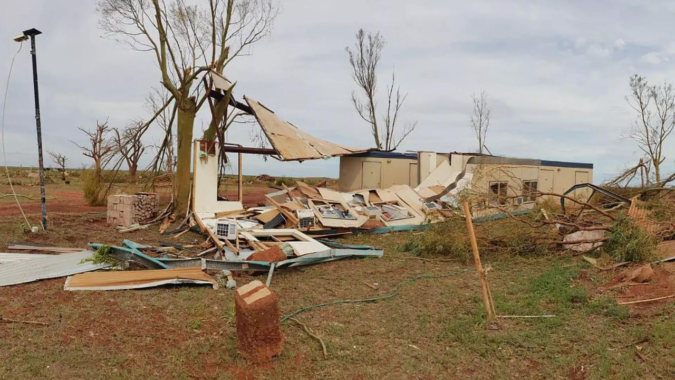SYDNEY: Emergency authorities in Western Australia were assessing damage on Saturday from a tropical cyclone that hit the state’s northwest, sparing heavily populated areas but affecting several remote communities.
Ilsa, downgraded to a severe weather system, made landfall in the sparsely populated Pilbara region of Western Australia early on Friday with an intensity rating of 5, the highest.
The storm is the second extreme weather event this year in the state’s northwest. “Once in a century” floods lashed the vast Kimberley region further north in January.
Western Australia Department of Fire and Emergency Services Assistant Commissioner Rick Curtis said crews were surveying damage in the “very large area” hit by Ilsa.
“There is a large path of destruction,” Curtis told ABC television, saying there had been damage to some homesteads and station properties in the region.
“It’s quite a remote part of Western Australia so getting support services to the area will take some time and effort.”
The cyclone, which set a preliminary Australian record 10-minute sustained wind speed of 218 km per hour (135 mph), missed the world’s largest iron ore export hub at Port Hedland, before moving inland.
As the focus shifted to recovery, the federal and state governments on Saturday made emergency payments available to affected residents.
“This cyclone has impacted on many extremely remote communities and … it may take some time to fully understand the full extent of the impact,” Acting Federal Emergency Management Minister Andrew Giles said in a statement with Western Australian counterpart Sue Ellery.
Australia’s weather forecaster warned of possible severe weather on Saturday in parts of the neighbouring Northern Territory, including potential flooding in the outback town of Alice Springs, as the ex-cyclone tracked east.
Ilsa, downgraded to a severe weather system, made landfall in the sparsely populated Pilbara region of Western Australia early on Friday with an intensity rating of 5, the highest.
The storm is the second extreme weather event this year in the state’s northwest. “Once in a century” floods lashed the vast Kimberley region further north in January.
Western Australia Department of Fire and Emergency Services Assistant Commissioner Rick Curtis said crews were surveying damage in the “very large area” hit by Ilsa.
“There is a large path of destruction,” Curtis told ABC television, saying there had been damage to some homesteads and station properties in the region.
“It’s quite a remote part of Western Australia so getting support services to the area will take some time and effort.”
The cyclone, which set a preliminary Australian record 10-minute sustained wind speed of 218 km per hour (135 mph), missed the world’s largest iron ore export hub at Port Hedland, before moving inland.
As the focus shifted to recovery, the federal and state governments on Saturday made emergency payments available to affected residents.
“This cyclone has impacted on many extremely remote communities and … it may take some time to fully understand the full extent of the impact,” Acting Federal Emergency Management Minister Andrew Giles said in a statement with Western Australian counterpart Sue Ellery.
Australia’s weather forecaster warned of possible severe weather on Saturday in parts of the neighbouring Northern Territory, including potential flooding in the outback town of Alice Springs, as the ex-cyclone tracked east.
